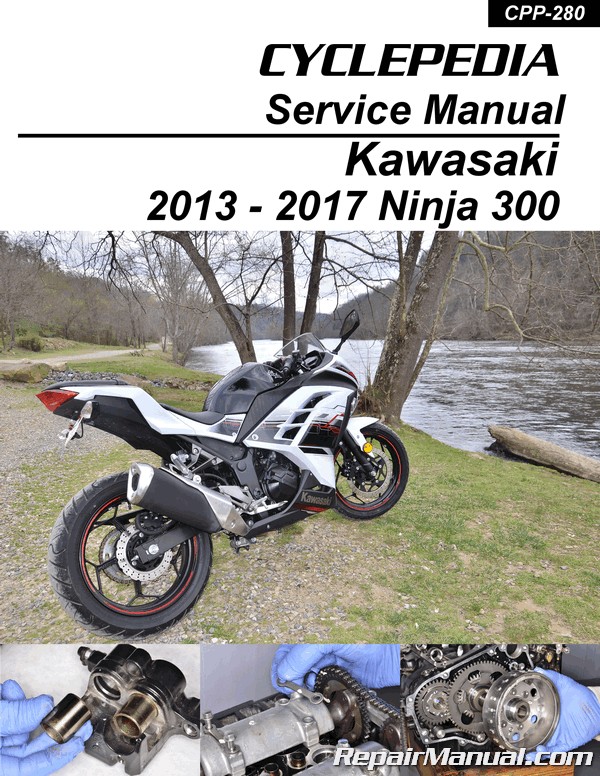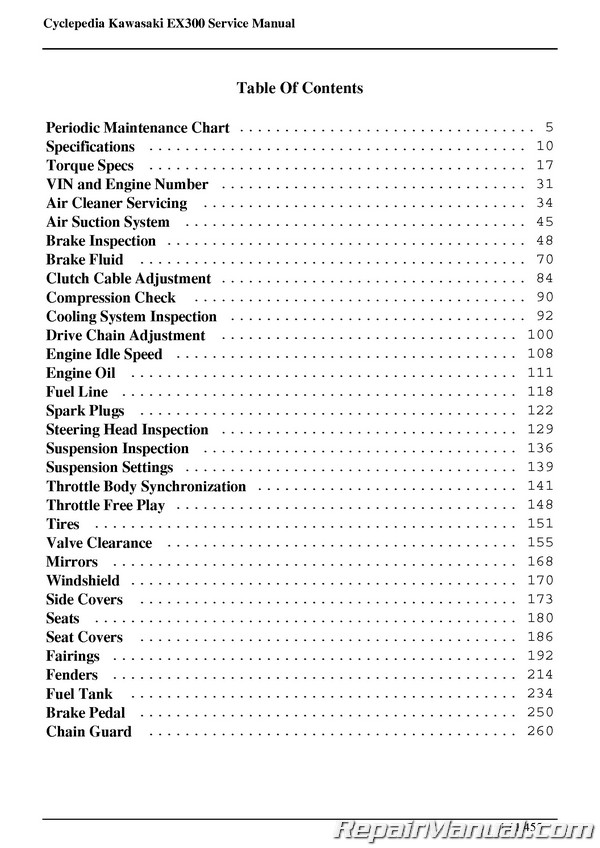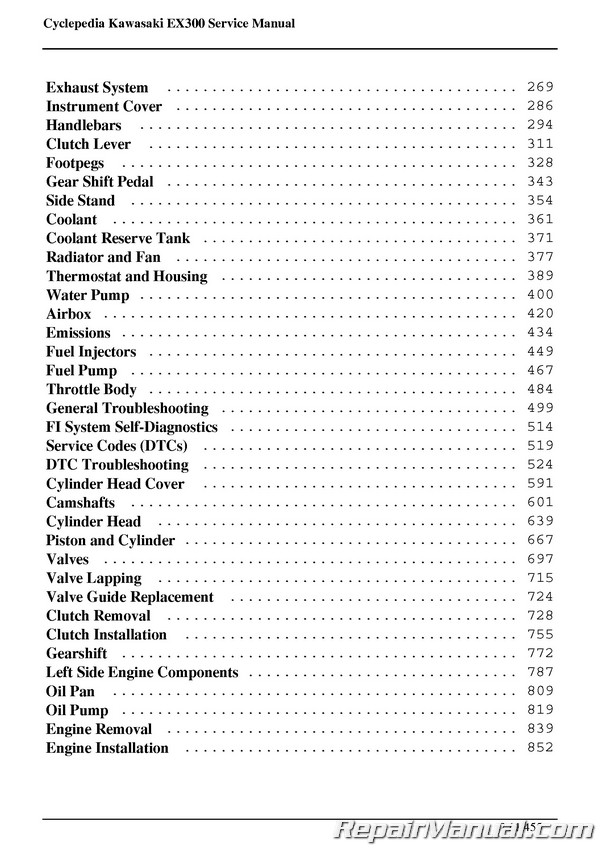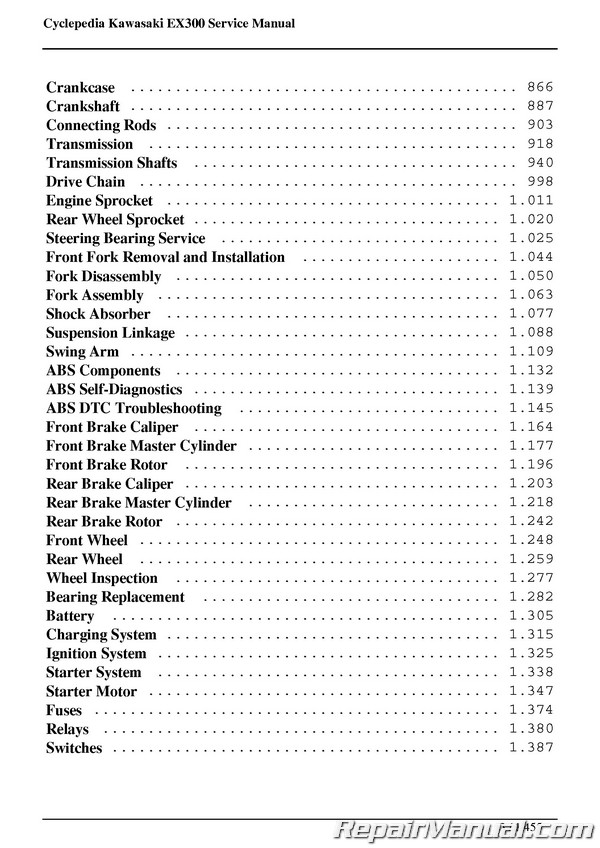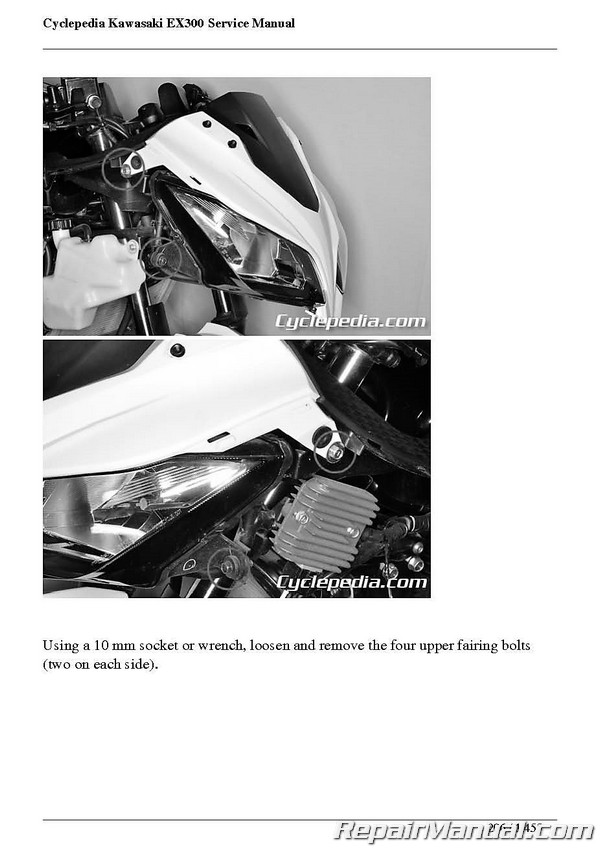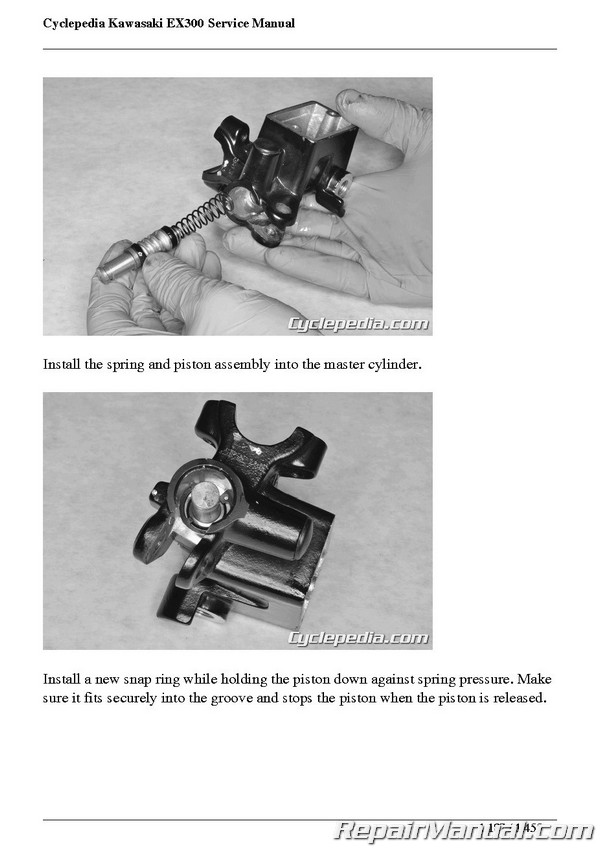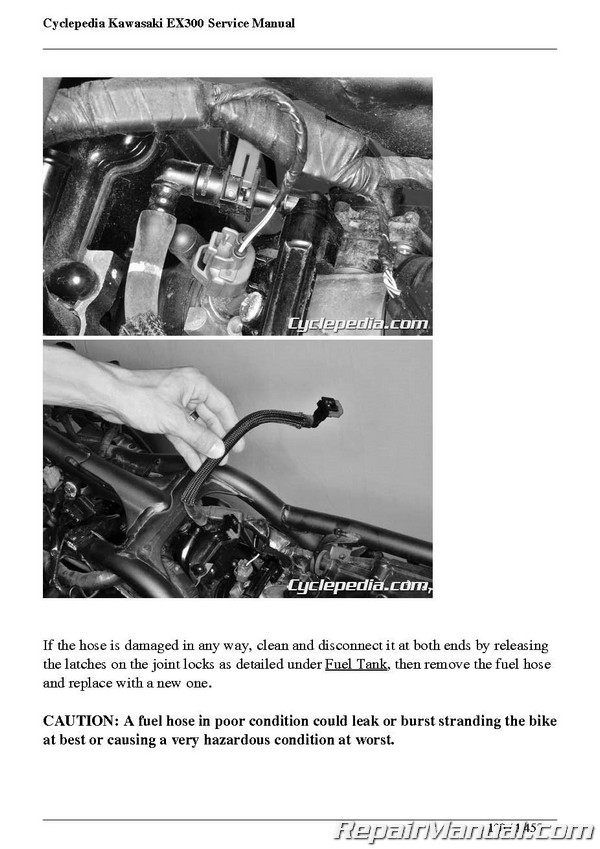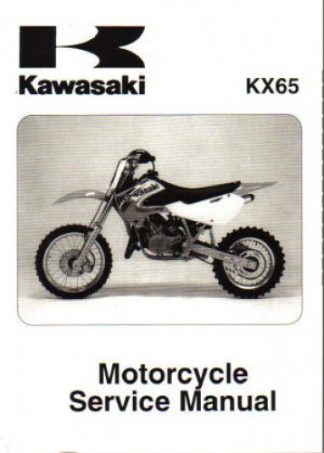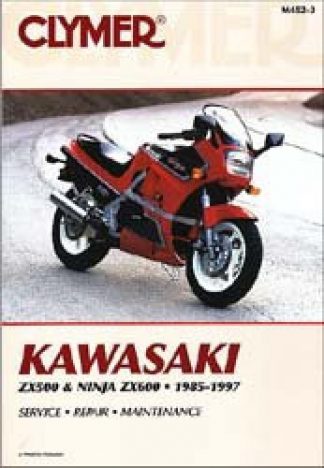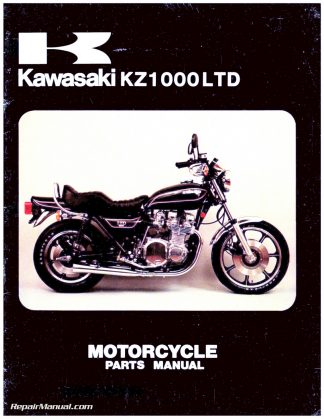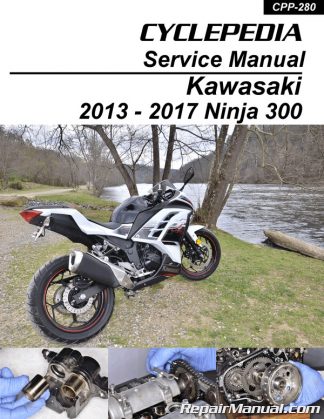Description
Do you need to service your 2013-2017 Kawasaki Ninja EX300 Motorcycle? The Cyclepedia Press LLC 2013 ~ 2017 Kawasaki Ninja 300 printed motorcycle service manual features detailed black and white photographs and color wiring diagrams, complete specifications with step-by-step procedures performed and written by a seasoned Kawasaki dealer trained technician. This is the book you need to work on your Ninja 300.
Includes 1 year of support and access to the full color online version.
The Cyclepedia 2013~2017 Kawasaki Ninja 300 motorcycle manual will help you repair the following Kawasaki Ninja 300 motorcycles:
| Year | Model | Beginning Frame Number |
| 2013 | EX300AD | JKAEX8A1*DDA00001, JKAEX300AADA00001 |
| 2013 | EX300BD | JKAEX8B1*DDA00001, JKAEX300ABDA00001 |
| 2014 | EX300AE | JKAEX8A1*EDA16618, JKAEX8A1*EA000001, JKAEX300AADA16618 |
| 2014 | EX300BE | JKAEX8B1*EDA05708, JKAEX8B1*EA000001, JKAEX300ABDA05708 |
| 2015 | EX300AF | JKAEX8A1*FDA20018, JKAEX8A1*FA012001, JKAEX300AADA19898 |
| 2015 | EX300BF | JKAEX8B1*FDA15758, JKAEX8B1*FA015001, JKAEX300ABDA15250 |
| 2016 | EX300AG | JKAEX8A1*GDA25801 |
| 2016 | EX300BG | JKAEX8B1*GDA23535, JKAEX300ABDA23486 |
| 2017 | EX300AH | JKAEX8A1*HDA30101 |
| 2017 | EX300BH | JKAEX8B1*HDA33631 |
*This digit in the frame number changes from one machine to another
Quick Reference:
Specifications
Torque Specs
VIN and Engine Number
Periodic Maintenance:
Periodic Maintenance Chart
Air Cleaner Servicing
Air Suction System
Brake Fluid
Brake Inspection
Clutch Cable Adjustment
Compression Check
Cooling System Inspection
Drive Chain Adjustment
Engine Idle Speed
Engine Oil
Fuel Line
Spark Plugs
Steering Head Inspection
Suspension Inspection
Suspension Settings
Throttle Body Synchronization
Throttle Free Play
Tires
Valve Clearance
External Components:
Brake Pedal
Chain Guard
Clutch Lever
Exhaust System
Fairings
Fenders
Footpegs
Fuel Tank
Gear Shift Pedal
Handlebars
Instrument Cover
Mirrors
Seat Covers
Seats
Side Covers
Side Stand
Windshield
Cooling System:
Coolant
Coolant Reserve Tank
Radiator and Fan
Thermostat and Housing
Water Pump
Fuel System
Airbox
Emissions
Fuel Injectors
Fuel Pump
Throttle Body
General Troubleshooting
FI System Self-Diagnostics
Service Codes (DTCs)
DTC Troubleshooting
Engine:
Cylinder Head Cover
Camshafts
Cylinder Head
Piston and Cylinder
Valves
Valve Lapping
Valve Guide Replacement
Clutch Removal
Clutch Installation
Gearshift
Left Side Engine Components
Oil Pan
Oil Pump
Engine Removal
Engine Installation
Crankcase
Crankshaft
Connecting Rods
Transmission
Transmission Shafts
Final Drive:
Drive Chain
Engine Sprocket
Rear Wheel Sprocket
Steering:
Steering Bearing Service
Front Suspension:
Front Fork Removal and Installation
Fork Disassembly
Fork Assembly
Rear Suspension:
Shock Absorber
Suspension Linkage
Swing Arm
Brakes:
ABS Components
ABS Self-Diagnostics
ABS DTC Troubleshooting
Front Brake Caliper
Front Brake Master Cylinder
Front Brake Rotor
Rear Brake Caliper
Rear Brake Master Cylinder
Rear Brake Rotor
Wheels:
Front Wheel
Rear Wheel
Wheel Inspection
Bearing Replacement
Electrical Systems:
Battery
Charging System
ECU
Fuses
Headlight
Horn
Ignition System
Lights
Meter
Relays
Starter Motor
Starter System
Switches
Wiring Diagrams
The 2013-2017 Kawasaki Ninja 300, often referred to as the Kawasaki Ninja EX300, is a popular entry-level sportbike known for its sporty design and agile performance. Here are some key features and common issues associated with this model:
Key Features:
Engine: Powered by a 296cc, liquid-cooled, parallel-twin engine, the Ninja 300 delivers a good balance of power and fuel efficiency.
Design: The Ninja 300 features a sporty design inspired by Kawasaki’s larger sportbikes. It has a full fairing, aggressive styling, and a comfortable riding position for both beginners and experienced riders.
Handling: With a lightweight chassis and responsive handling, the Ninja 300 is known for its agility, making it suitable for city commuting and spirited riding on twisty roads.
Brakes and Suspension: It comes equipped with disc brakes for reliable stopping power and a suspension system that offers a good balance between comfort and sporty handling.
Fuel Injection: Fuel injection contributes to smooth throttle response and efficient fuel delivery.
Common Issues:
Vibration: Some riders have reported vibration issues, particularly at higher RPMs. This can be subjective, and what one rider finds acceptable, another may not. Proper maintenance, including balancing wheels, can help alleviate vibration.
Oil Leaks: There have been occasional reports of oil leaks, often from the gasket areas. Regular checks and prompt addressing of any leaks are essential.
Throttle Response: Riders have noted that the throttle response can be a bit abrupt, especially at low speeds. This can be managed with smooth throttle control, and some riders choose to install aftermarket throttle kits to improve the response.
Gear Indicator: On some models, the lack of a gear indicator on the instrument cluster has been mentioned as a drawback. Aftermarket accessories are available to address this.
Quality of OEM Tires: Some riders have found the original equipment manufacturer (OEM) tires to wear out relatively quickly. Upgrading to higher-quality tires is a common solution.
It’s important to note that while these are common issues reported by some riders, many Ninja 300 owners have had positive experiences with their bikes, enjoying the combination of performance and affordability. Regular maintenance and addressing any issues promptly can contribute to a more satisfying ownership experience.

